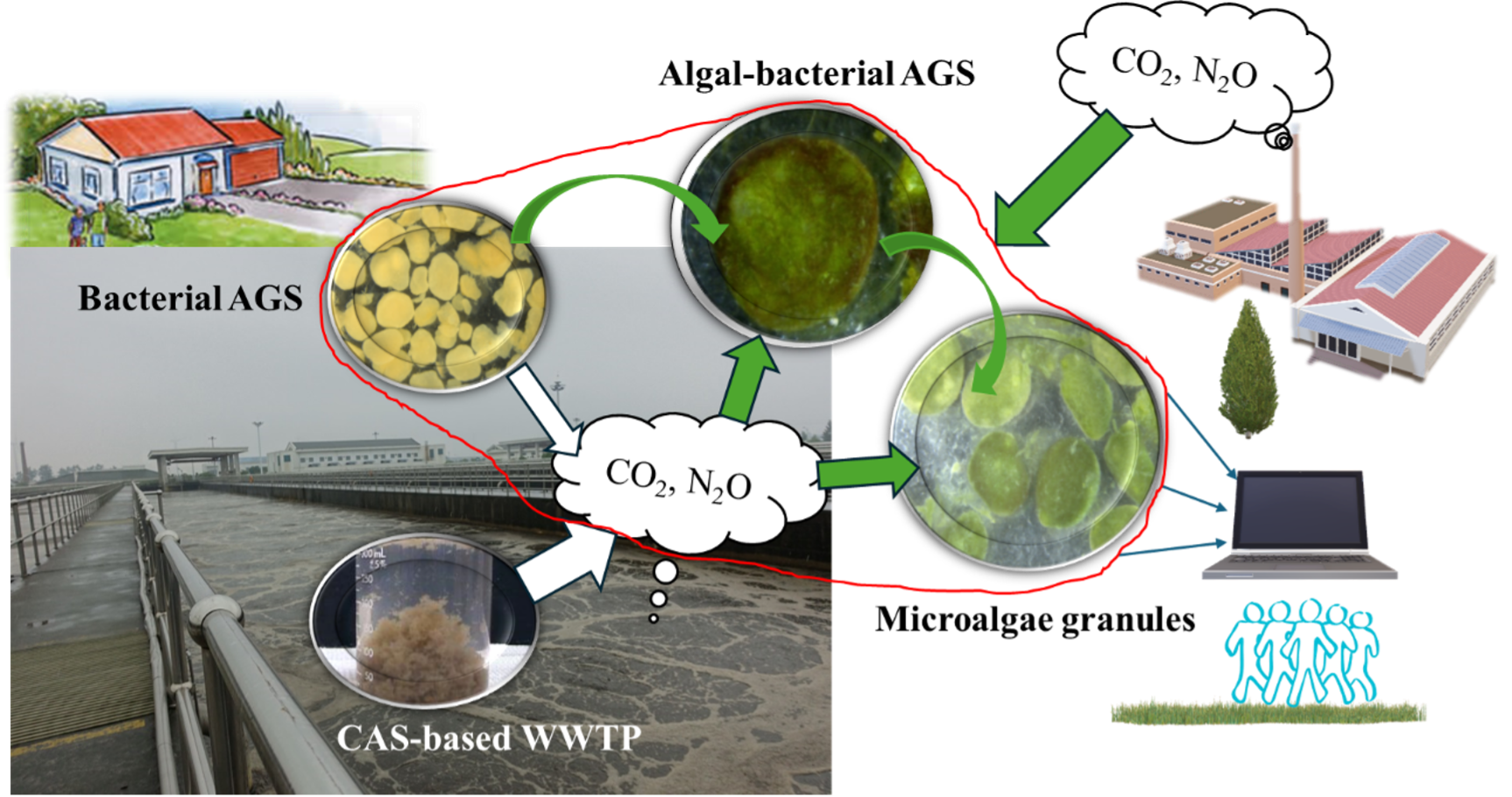
The Research problem
Wastewater treatment and discharge has been reported to directly account for a huge amount emission of greenhouse gases (GHGs) including CO2 and N2O globally. N2O is a 300-fold powerful GHG than CO2, which is largely produced from nitrification/denitrification processes in biological wastewater treatment if not properly controlled.
The flocculent conventional activated sludge (CAS) discovered 100 years ago is currently the main biological process in wastewater treatment plants (WWTPs) worldwide. Since the first report in 1990s, bacterial aerobic granular sludge (AGS) process has been developed and applied in more than 100 municipal and industrial WWTPs in the world, largely reducing energy consumption and land occupation thus CO2 emission reduction. Still, N2O production and emission control remains a challenging issue. Since 2015, algal-bacterial AGS, the granular consortium of microalgae and bacteria, has demonstrated high potentials for nutrients (especially N and P) uptake and CO2 sequestration, fast biomass growth, and further large reduction in O&M costs when compared to the bacterial AGS. In addition, microalgae granules can be formed from naturally grown or functional microalgae like oil-producing single-cell microalgae. Although previous works suggest the great potentials of these biogranule systems, little information is available on N2O production/emission and mitigation, especially when they are operated in different geographical locations. Moreover, how to intelligently re-utilize the produced N2O to produce N-rich biogranules remains unknown.
Research Design
This project will be undertaken via the close collaboration among the investigators from three universities, i.e., University of Tsukuba (UT, Japan), University of Technology Sydney (UTS, Australia), and University of Exeter (UE, UK).
The UT team members (Dr. Zhongfang Lei and Dr. Tian Yuan) are very familiar with biogranualtion of different microorganisms. In this project, UT will mainly focus on the operation/maintenance of the biogranale systems, monitor N2O production and N content in biogranules under different operational conditions.
The UTS team members (Dr. Wenshan Guo and Dr. Huu Hao Ngo) are the world-leading experts on green technologies for resource and energy recovery, waste-to-energy, water-waste-energy nexus, and climate change mitigation. In this project, UTS will concentrate on the probable approaches for N2O emission mitigation in the biogranule systems, which can be manifested by the UT team.
The UE team, especially Dr. Guangtao Fu, is well known for their expertise on water intelligence. UE can help develop and apply mathematical models to better analyse the experimental data and provide in-depth insights to tackle the N2O production and mitigation issues in these systems, which can help the UT team intelligently re-utilize and timely consume the produced N2O to produce N-rich biogranules, realizing N2O emission mitigation and N bioeconomy.
Project Objectives
With the financial support by WUN, three universities from different geographical locations with different cultures, weather patterns, temperature ranges, and sunlight illumination can well co-operate to advance the three biogranule-based systems and promote their global applications in WWTPs.
Through this WUN RDF project, the following goals are expected to attain. (1) A zero net-N2O-emission bioganule system with intelligent control can be established; (2) All influent N can be transformed into biomass N and recycled in the society; (3) The biogranule-based WWTP can be energy/resource self-sufficient if the three types of biogranules are properly integrated.
The success of this project can greatly reduce GHGs emission from wastewater industry globally and thus contribute to the sustainable development of the society.